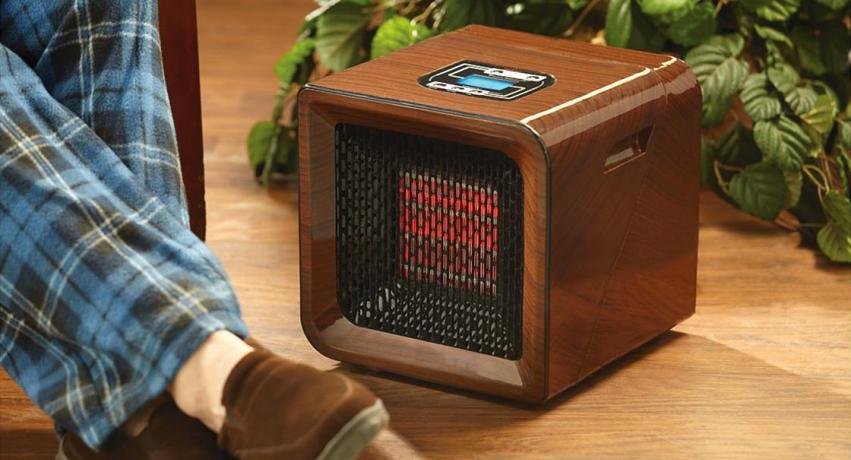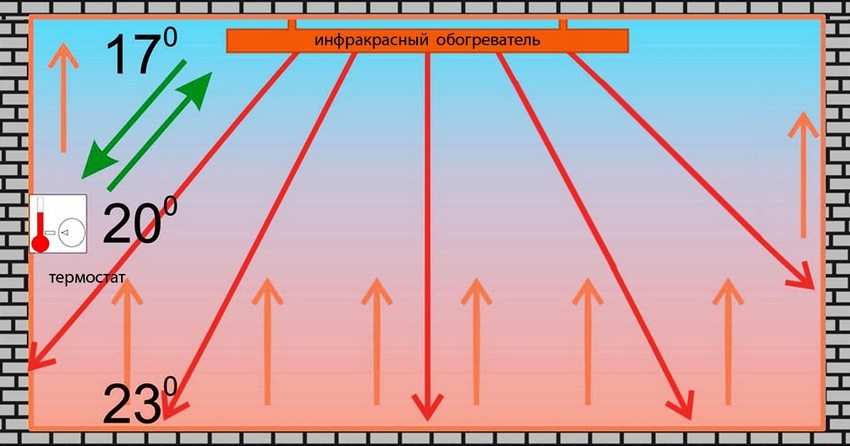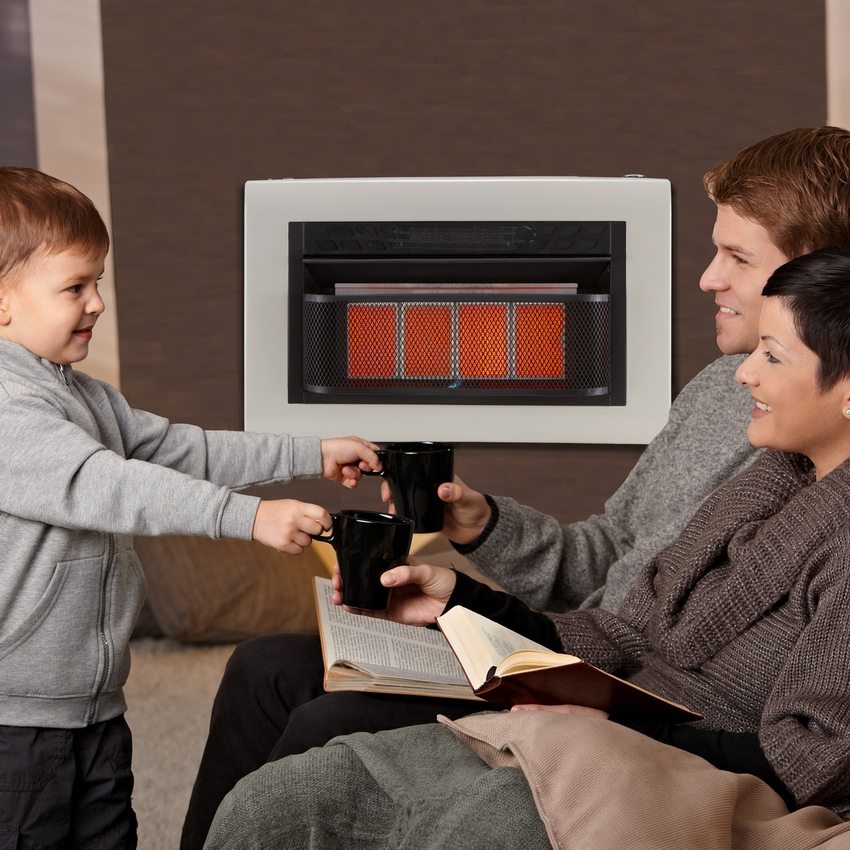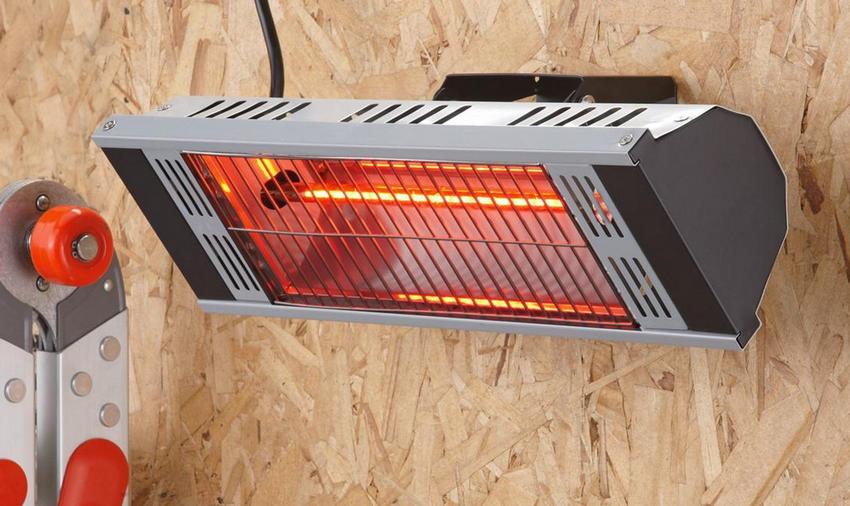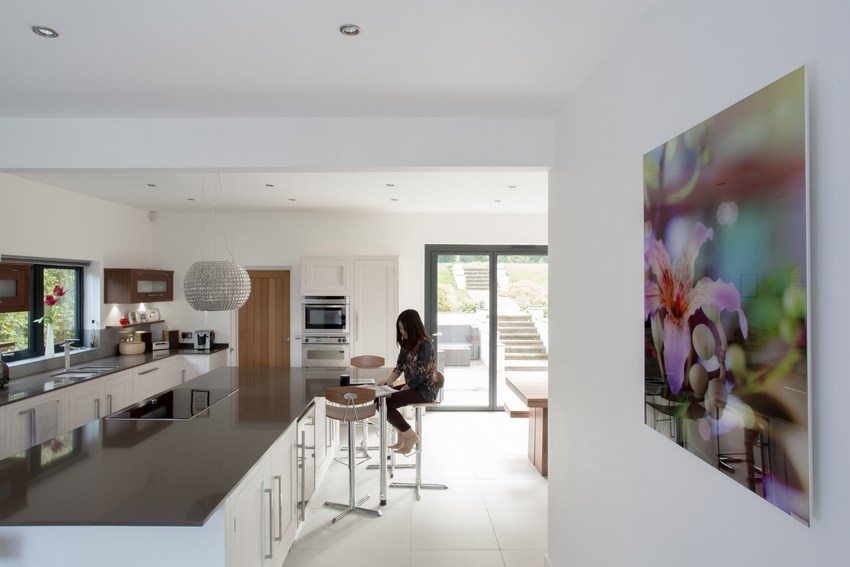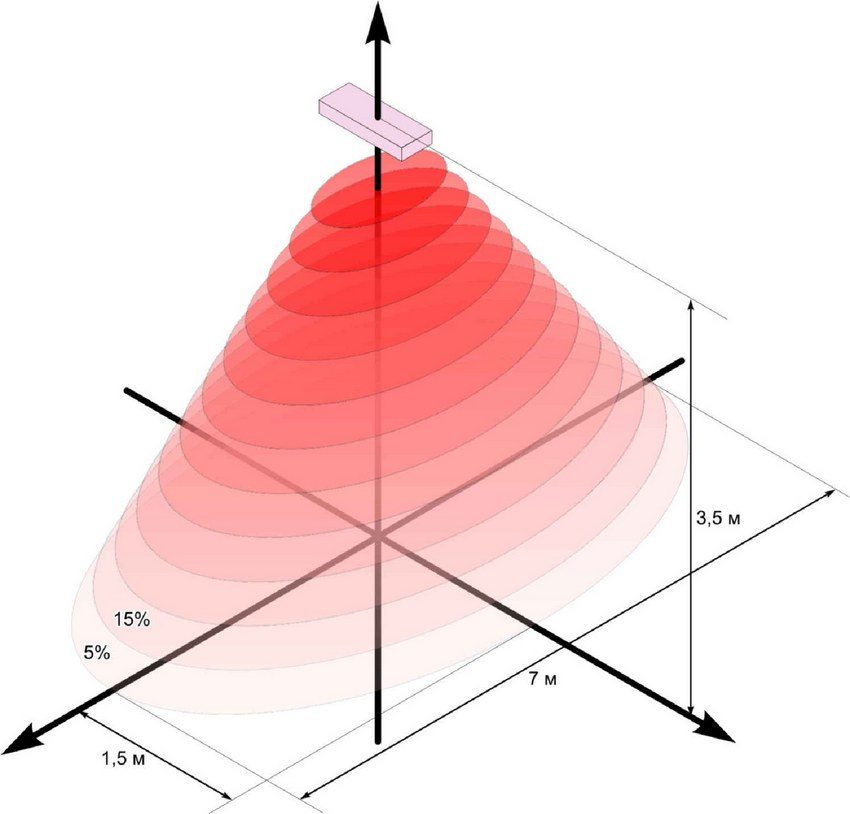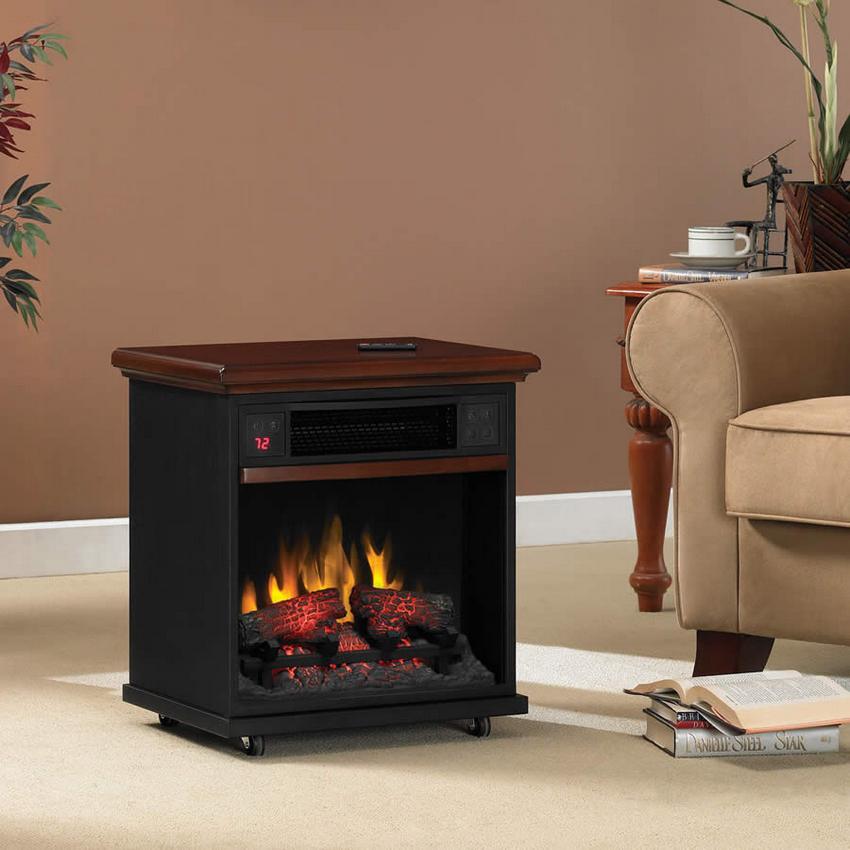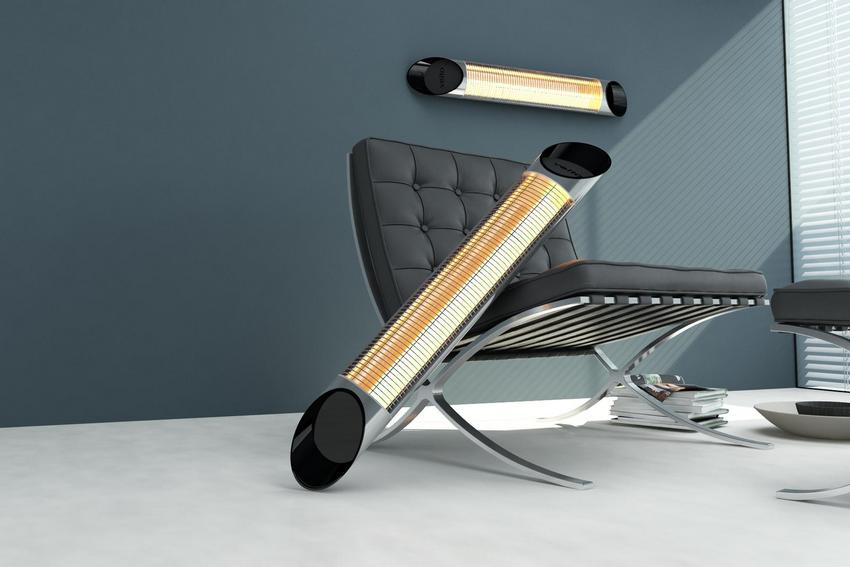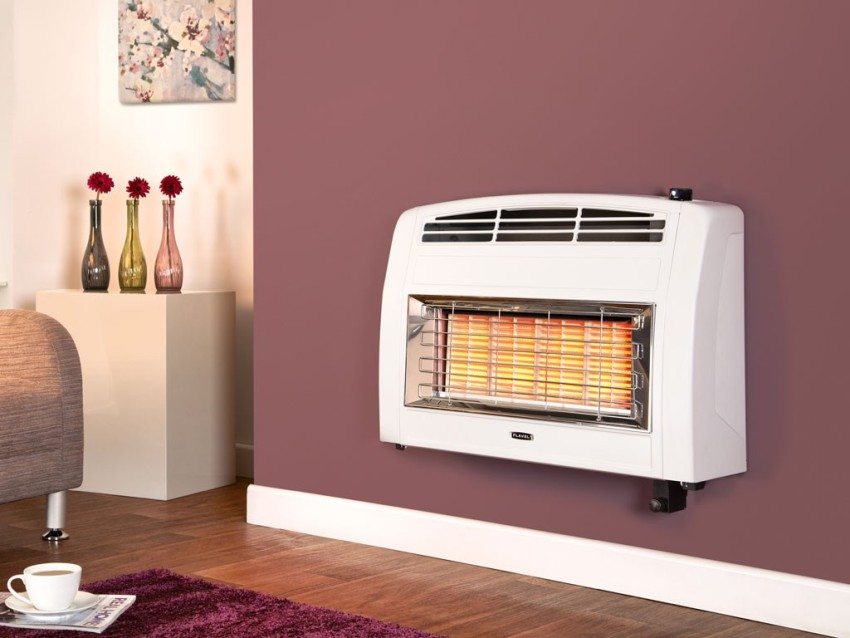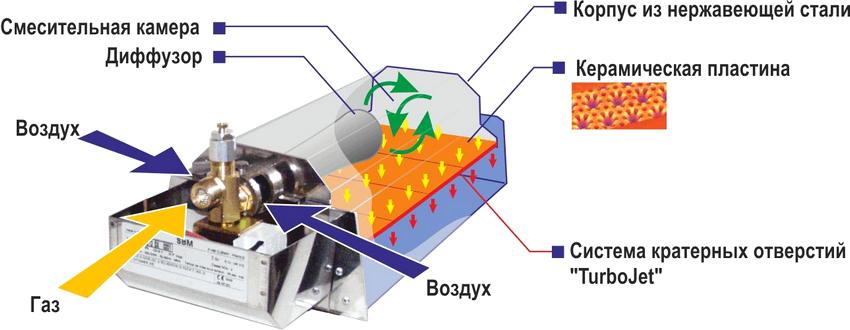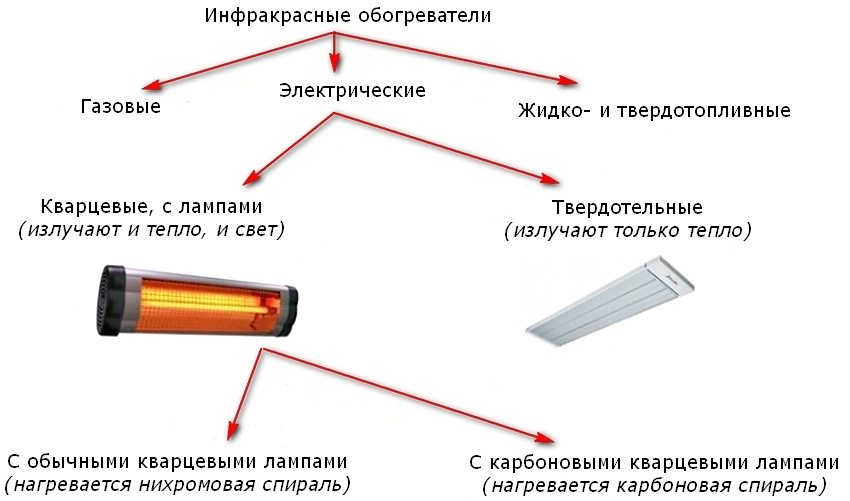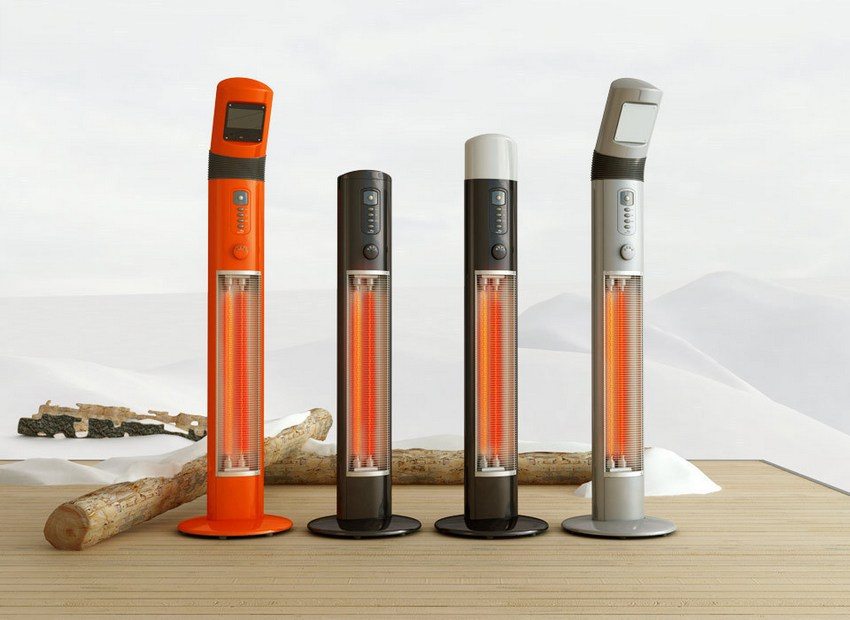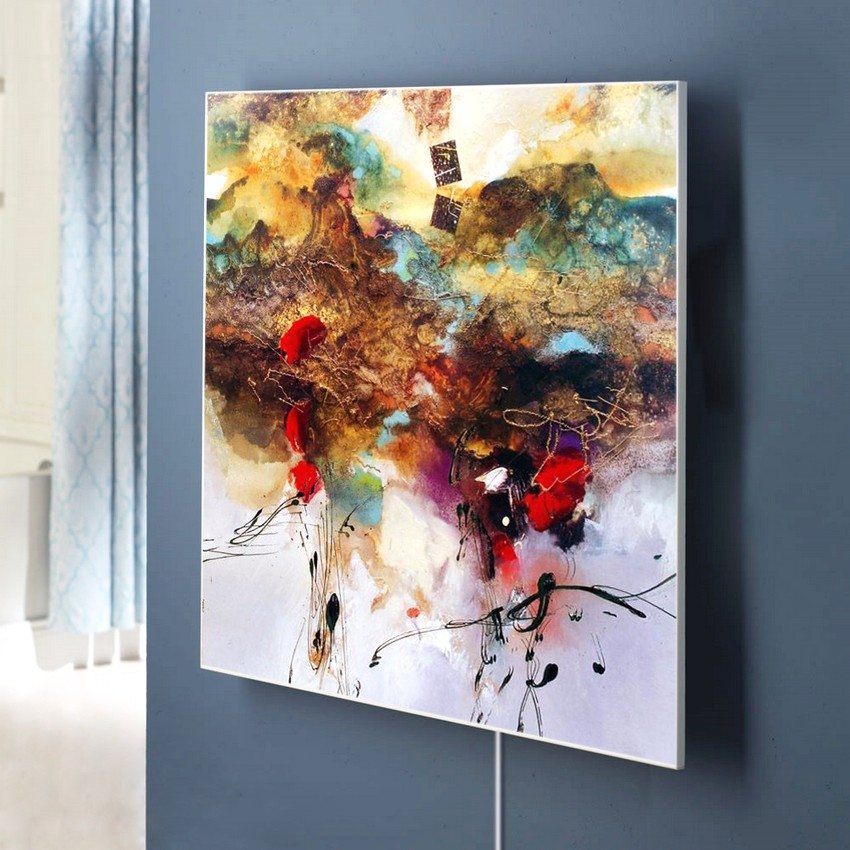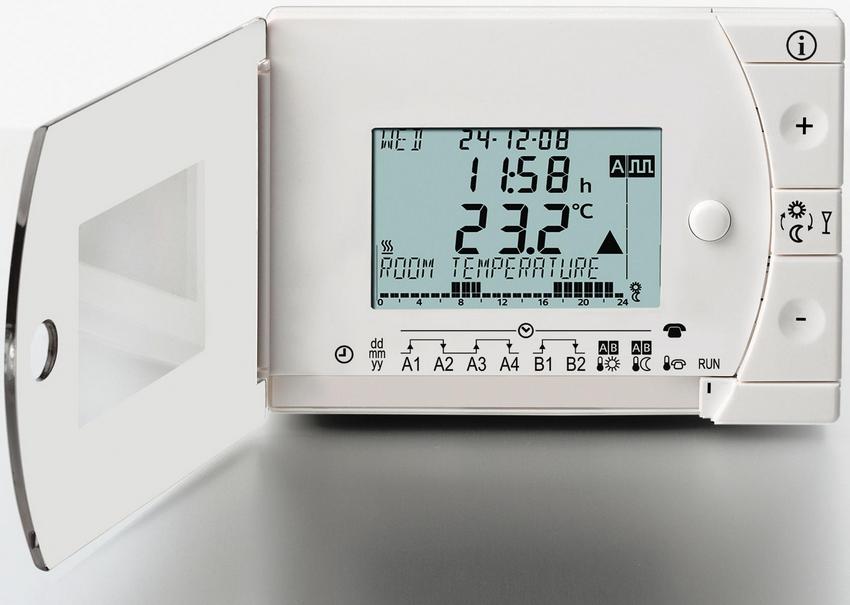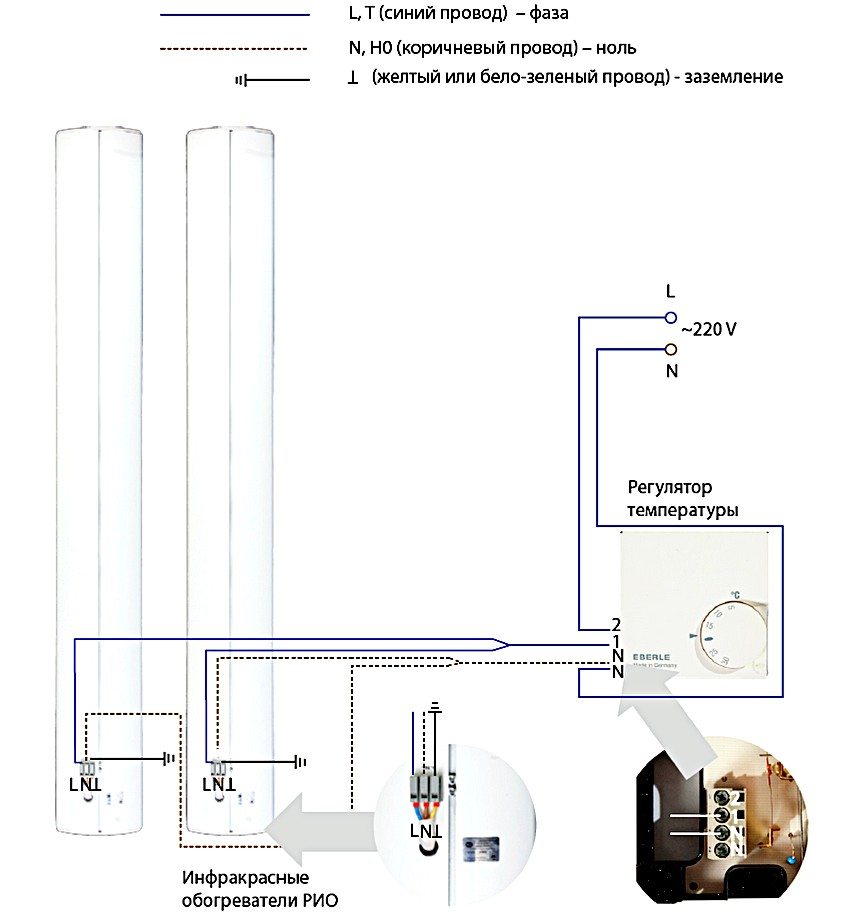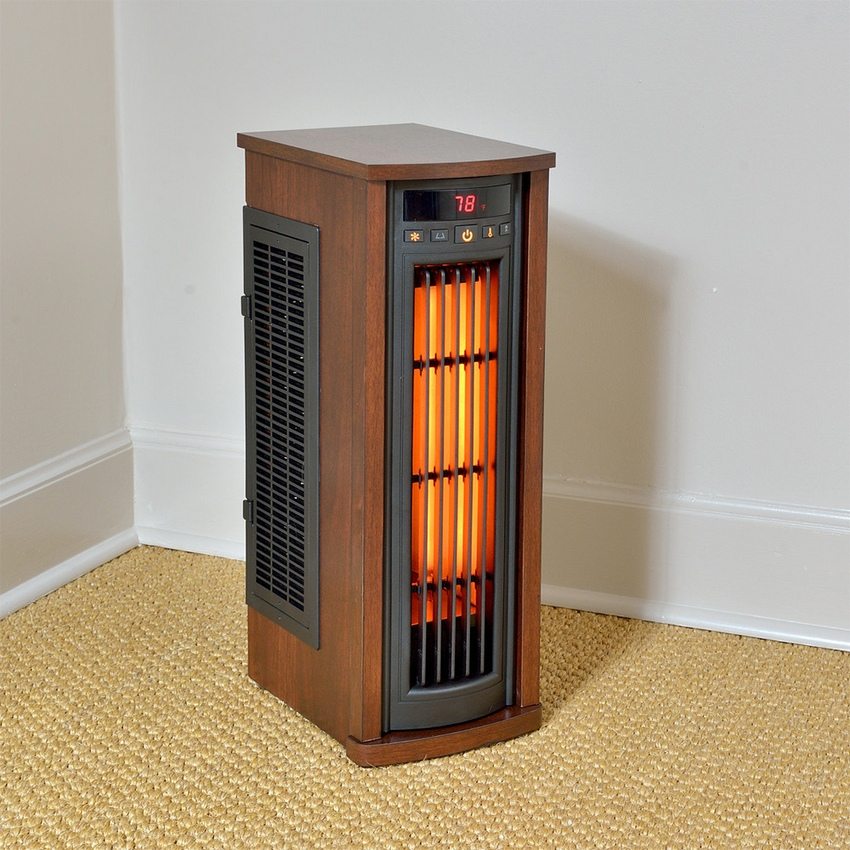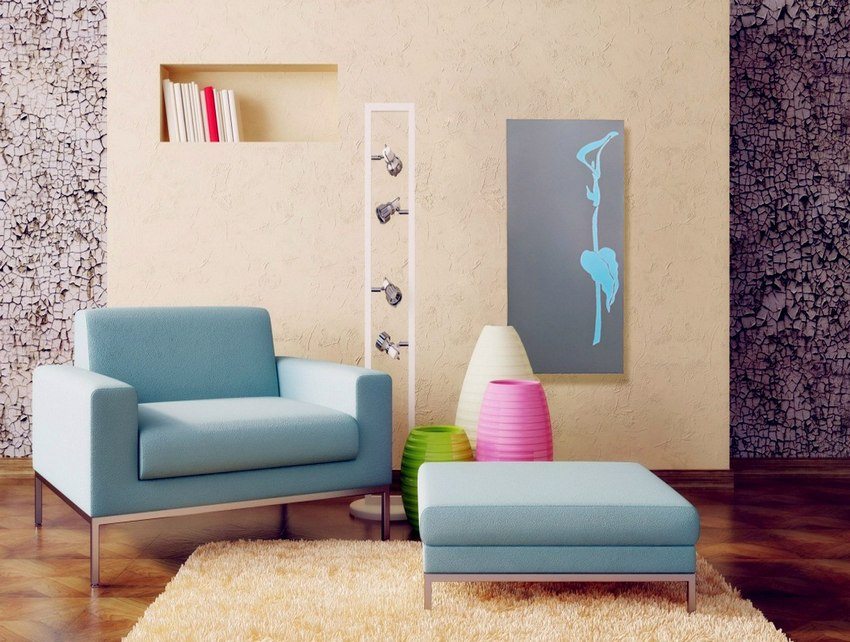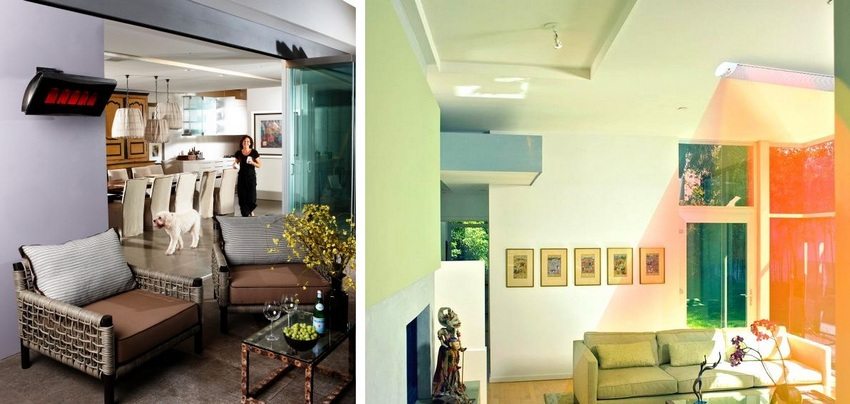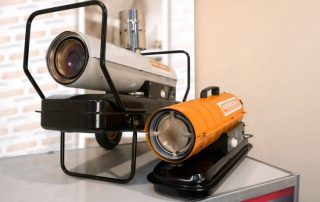Every summer cottage owner wants to be cozy and warm inside a country house in any weather. Stationary heating systems, including boilers, pipe loops, radiators and a warm floor system, are an excellent option if you plan to live outside the city all year round. But what if the stay in the house is limited only to the summer period? In this case, infrared heaters with a thermostat for a summer residence are the best solution to the problem of heating a country house.
Content [Hide]
- 1 Infrared heaters with a thermostat for a summer residence: principle of operation
- 2 Infrared heaters: advantages and disadvantages
- 3 Varieties of infrared heaters
- 4 Criteria for choosing infrared heaters for summer cottages
- 5 Thermoregulators for an IR heater: principle of operation and connection features
- 6 How to choose an energy-saving home heater yourself
- 7 Using infrared heaters for greenhouses
Infrared heaters with thermostat for summer cottages: principle of operation
Currently, the market is full of offers and choosing the right option will not be a difficult task. The only thing you need to understand is what the selection criteria are and what you should focus on. First, let's look at how the heating system works, then the device itself, its principle of operation and advantages over classic room heating systems.
If we consider the heating system familiar to us, which consists of water circuits and radiators, it is easy to come to the conclusion that heat is transferred into space in three ways:
- direct heat transfer - direct exchange between the surface of the heater and the air around it. This option has a significant drawback - the limited working area of the radiator. It can be increased by increasing the temperature in the system;
- convection is a process directly related to direct heat transfer. The special design of the radiators contributes to the formation of convection air currents, which, when heated to the required temperature, are able to move throughout the entire area of the room. The disadvantages of this option include the fact that warm air moves upward, while the floor and the lower level of the room remain cold. Such currents create drafts and carry dust;
- heat radiation also occurs in a classic heating system, however, it is so small that it cannot seriously affect the overall performance. In addition, the area of its distribution is very small.
Infrared heaters for summer cottages with a thermostat have a fundamentally different principle of operation.Thanks to electromagnetic waves lying in a certain range, energy is transferred over a distance. This is how solar energy spreads across our planet, heating objects and substances that come across on the way. And they give this heat to the surrounding air. Thus, the principle of operation of this type of heaters was borrowed from nature itself.
When using a local "sun" placed absolutely anywhere in the room, furniture, walls, floor and ceiling receive heat, which is then released into the environment, and comfortable conditions are created in the room.
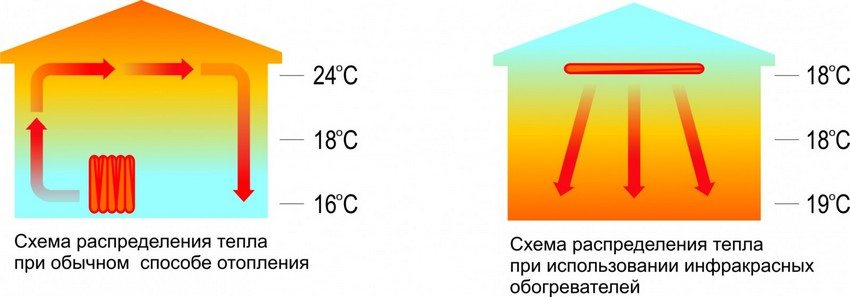
Comparative diagram of temperature distribution for convection heating and in the case of using an infrared heater
Infrared heaters: advantages and disadvantages
At first, you may be surprised by the large price range of infrared heaters. The pros and cons of using such a device in your home will help determine the information below.
Consider the main advantages of this type of heater:
- a high rate of warming up of even very large rooms and a feeling of warming almost immediately after the start of the heater;
- absence of convection flows during heating;
- The efficiency of such devices is almost 100%;
- comfortable air distribution throughout the room: the warmest - near the floor, the coolest - near the ceiling;
- as a result of the operation of the device, oxygen does not burn, and the natural level of humidity is maintained;
- infrared heaters absolutely silent;
- the stylishness and compactness of modern models allow you to choose a suitable option for any interior;
- mobility is another significant plus of this type of heaters. You can easily take the device with you or simply rearrange it to a more convenient place for you;
- fire and electrical safety of such devices at the highest level;
- installation and use of the IR heater does not cause any difficulties even for those users who are not very well versed in the operation of electrical appliances.
This type of heating devices is not devoid of disadvantages. For example, zone heating, which, on the one hand, is an advantage, on the other hand, significantly limits the zone of comfortable stay.
You can often find statements about the dangers of infrared heaters. And although, according to all indicators, the effect on the human body of medium and long infrared waves is not dangerous, and sometimes even useful, one cannot exclude the option of an individual allergic reaction. This is manifested by excessive lacrimation and irritability of the mucous membrane of the eyes.
Helpful advice! Long-term direct exposure of the eyes to infrared rays is strongly discouraged. This is fraught with serious corneal burns.
Due to the possible negative consequences of infrared heaters, it is necessary to adhere to all recommendations for installation and operation. The device is never placed in such a way as to act directly on a person, for example, over a bed. Before buying, be sure to think about where and how you will place the heater.
If you have previously noticed any signs of radiation intolerance or are simply worried that infrared heaters are unhealthy, be sure to consult with your doctor first.
Varieties of infrared heaters
The range of infrared heaters on the market is so large that it will not be difficult to choose a device for absolutely any operating conditions. But in order to make the right choice, you need to understand at least a little about the specifics and classification of the goods.
Depending on the degree of radiation intensity, infrared heaters can be divided into three groups:
- shortwave with a wavelength range from 0.74 to 2.5 microns are the most powerful devices. For safety reasons, such heaters are not used in residential areas or even in shops or shopping centers. The scope of their application is large-scale industrial or public premises: railway stations, production shops, warehouses. The use of some models is permissible to create comfortable recreation areas on the summer grounds of restaurants or cafes;
- medium-wave devices occupy an intermediate position and emit waves from 2.5 to 50 microns. The use of such heaters is allowed everywhere, including in public places and living quarters;
- long-wave heaters (from 50 to 1000 microns) are the safest option in all respects. In these models, the emitter is not heated to excessively high temperatures, which makes its operation almost invisible. And the radiation itself in this range is not only not considered dangerous, but on the contrary - it has a beneficial effect on the human body. Due to hygiene standards, long wave heaters can be used in hospitals and kindergartens.
Also, IR heaters are divided into groups depending on the energy carrier used:
- diesel heaters, which require the combustion of liquid fuel. If we talk about choosing an infrared heater with a thermostat for a summer residence, this option is not considered at all. Firstly, it is unsafe, and secondly, the unpleasant smell of diesel fuel will not add comfort to your life;
- gas models are sometimes used to heat living quarters or outbuildings. For such devices to work, they must be connected to liquefied gas cylinders. To use these heaters, a good ventilation system is required, as well as constant monitoring of their operation. Despite its high efficiency, this option is still not optimal for use in the country, as it hides many dangers;
- electric heaters are the most common option today. Such devices consist of an infrared radiation source and an aluminum or steel reflector, which provides heat transfer in the desired direction. This type of heater is often spherical or parabolic.
Helpful advice! Not so long ago, new models of heaters appeared, in which there is no reflector. This is the safest of all possible options, since in this case the panels do not heat up above 90 degrees.
In turn, electric heaters are divided into several types:
- halogen;
- carbon;
- glass;
- ceramic.
Criteria for choosing infrared heaters for summer cottages
Perhaps one of the most important criteria for choosing a heater is how it is installed. Given this characteristic, the following types of heating devices can be distinguished:
- outdoor;
- ceiling;
- wall.
Floor heaters are the lightest and most mobile option. They can be easily carried, rearranged and even transported with you if necessary. The only drawback of such models is the very limited area of influence. The choice of floor heaters is quite large. They can be either with vertical or horizontal arrangement of the IR emitter, which can also have a variety of shapes. The device can be placed directly on the floor or have a special stand or platform.
Ceiling infrared heaters with a thermostat are the second most popular. Their main advantage is a convenient location, which allows not only to additionally free up space in the room, but also to cover the maximum area for heating.
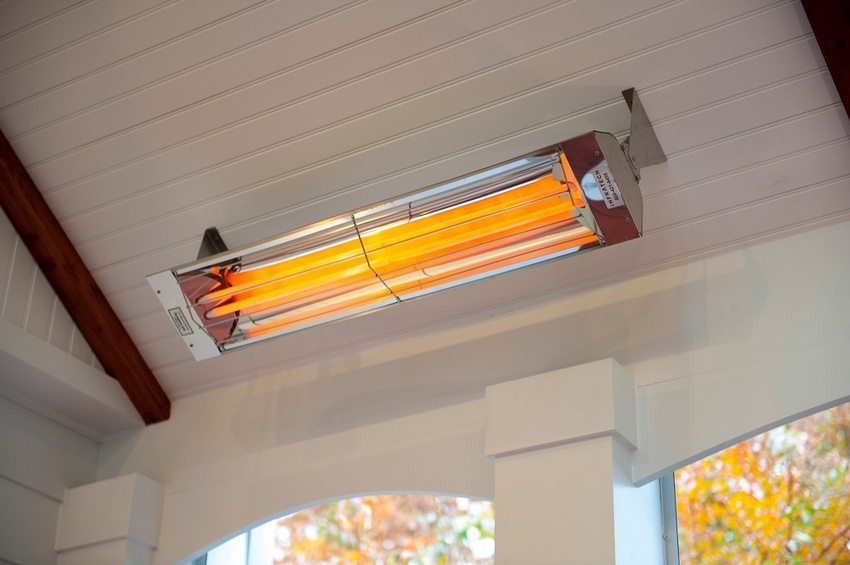
Ceiling models do not clutter up the space and allow you to cover the maximum area for heating
Today you can buy an infrared ceiling heater with a thermostat, which will perfectly fit into the design of the room, since many models are similar to lamps. What's more, options are available even for suspended ceilings. The dimensions of such heaters are 600x600 mm, which allows them to ideally fit into a standard ceiling cell.
Wall mounted infrared heaters are often flat rectangular panels that do not clutter up the space. If you choose the right place for their location, they are able to cover a considerable area.
Helpful advice! You can order an individual design of both wall and ceiling infrared heaters with a thermostat. The price of such pleasure is high, but the unique design will delight you for a long time.
Thermoregulators for an IR heater: principle of operation and connection features
In order for the heater to maintain the required temperature regime, as well as in order to maximally secure the operation of the device, a thermostat is used, it is also thermostat... It happens that your chosen model does not have a built-in thermostat. Then it is worth considering the option of buying and installing thermostat separately.
Related article:
Electric heating convectors with wall thermostat. Types and characteristics. Design and features. The advantages of convectors, the nuances of choice. Operating rules.
What is it for? Receiving a signal from the air temperature sensor, the thermostat turns on or off the heating system. As the temperature rises, the resistance of the sensor drops. It can only go down to a certain level, after which the thermostat turns on and opens the circuit. Then the thermostat cools down. When the lower temperature mark is reached, the sensor turns on the system again. This principle of operation is the same for all devices, regardless of the type and manufacturer.
Types of thermostats:
- 300-1200 degrees Celsius - high temperature;
- 60-500 degrees Celsius - medium temperature;
- up to 60 degrees Celsius - low temperature.
Depending on the design, thermostats are divided into two types:
- Simple - mechanical or electromechanical devices. The main advantage of this type is its low cost. The disadvantage is the limited accuracy of temperature control. All the necessary parameters are indicated on a special scale, and mode switching is carried out using a button and a lever.
- Complex - fully electronic models that can be programmed. In this case, control and switching of modes is carried out using the touch screen or buttons.
Features of connecting the thermostat to an infrared heater:
- the location of the device should be at a height of no more than one and a half meters;
- it is imperative to lay a layer of insulation under the thermostat in order to avoid incorrect readings of the device due to the contact of its surface with a cold wall;
- one regulator is used for one room;
- for safety reasons, avoid touching the device with surrounding objects;
- the power of the thermostat must match the power of the heater.
If we talk about the method of installation, thermostats can be divided into open and hidden.
How to choose an energy-saving home heater yourself
Before moving on to choosing an IR heater for your home, it is recommended to carefully study the offers on the market, as well as read the reviews. Which heater is best for a summer residence is an ambiguous question. Much depends on the living conditions and individual requirements. Consider the main parameters of the device most suitable for use in a country house:
- An electric heater is the safest and most convenient option.
- Long wavelength emitters are preferred over others.
- The power of the heater is usually 100 W / m². This indicator, with sufficient thermal insulation of the room, provides constant uniform heating.
An important addition to an infrared heater is a thermostat, which will allow you to control the degree of heating of the device and set the desired temperature.
Helpful advice! If we are talking about a quick one-time heating of the room in the country, the best option would be to purchase a heater with a specific power of up to 120 W / m².
Control of the most modern models can include a smooth adjustment of the heating power, as well as an automatic thermostat that will turn off the device when the required room temperature is reached.
Moreover, a considerable number of modern models have remote control. The most convenient option is to connect the heater to the climate control system. How much these functions are necessary in a summer residence, it's up to you.
When choosing an energy efficient home heater, also pay attention to the following points:
- the heater should not be too large and take up too much space;
- be sure to pay attention to the weight of the structure when it comes to purchasing a ceiling infrared heater with a thermostat. Customer reviews claim that for such devices, the kit must include parts for suspension, otherwise the ceiling may not withstand such a load. Do not forget that the heater should not be placed directly above the sleeping area or workplace;
- another important nuance when choosing an IR heater is the presence of protection against short circuits, overheating or falling of the device;
- the last, but one of the main selection criteria is the quality of the IR heater. Now you can find a lot of cheap devices from unknown manufacturers. Don't buy them! Not only because it will most likely be a waste of money and such a device will not last long. The heater is a rather dangerous device in itself and its unscrupulous assembly can cost you dearly. Prefer factory-certified certified merchandise available in store.
As an example, consider several of the most popular models of well-known manufacturers:
| Characteristics and features of the device | Dimensions, mm | Weight, kg | price, rub. |
| BALLU BIH-L-2.0 | |||
|
740x180x90 | 3,5 | from 2600 |
| NeoClima NC-IRHLS-2.0 | |||
|
1065x145x236 | 15 | from 3800 |
| Vitesse VS-870 | |||
|
150x150x1000 | 4 | from 3700 |
| Thermik S-0.7 | |||
|
690x400x50 | 3 | from 2500 |
| Almac IR-5 | |||
|
730x160x39 | 1,8 | from 2600 |
| Dome OIM-2 | |||
|
1648x275x43 | 9,4 | from 4000 |
| Master HALL 1500 | |||
|
540x320x250 | 4,8 | from 14500 |
| Noirot Royat 2 1200 | |||
|
120x450x110 | 1 | from 7500 |
| IkoLine IKO-08 | |||
|
1000x160x40 | 3,2 | from 2890 |
| Ballu BIGH-4 | |||
|
338x278x372 | 2,3 | from 3100 |
Using infrared heaters for greenhouses
Another area of application of infrared heaters, which cannot be ignored, is heating greenhouses. As a rule, devices with low power are used for this, which can be conveniently installed depending on the needs of the grown plants. Statistics show that using the right model can increase germination rates by 30-40%.
A distinctive feature of this heating method is the transfer of heat directly from the carrier to the soil or to the seedlings. At the same time, energy is not expended on heating the air - it heats up already from the warm soil. This makes the system economical and affordable to operate.
Summing up, we can say that infrared heaters are a worthy competitor for classic heating systems, which is not inferior to them in terms of efficiency. Moreover, the cost of such devices is much lower; they can be easily transported and installed anywhere in the room. Therefore, thinking about the heating system in the country, you can seriously consider infrared heaters as an alternative option.
